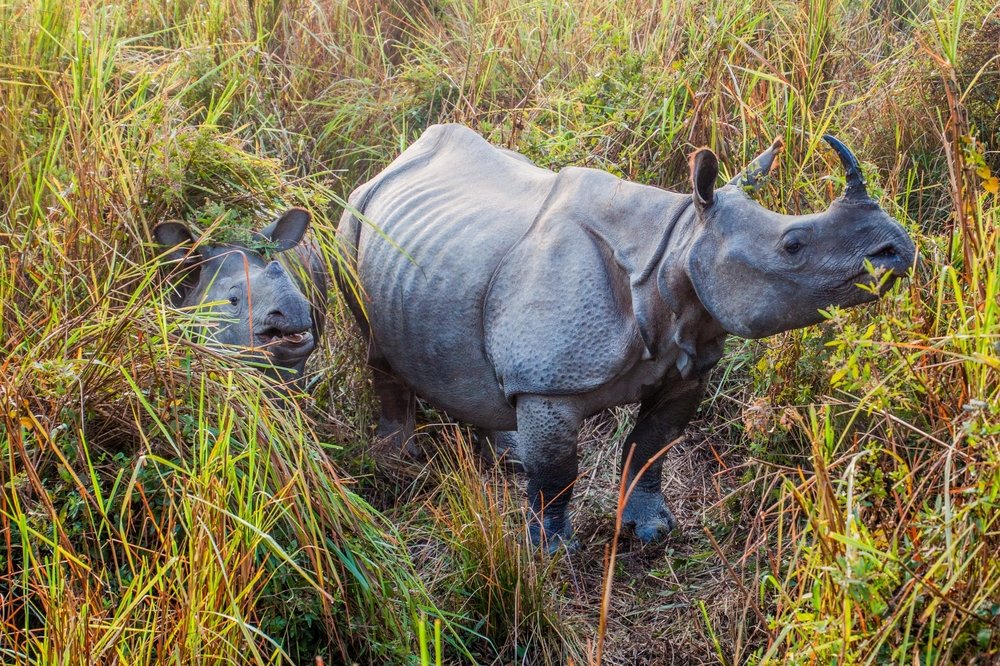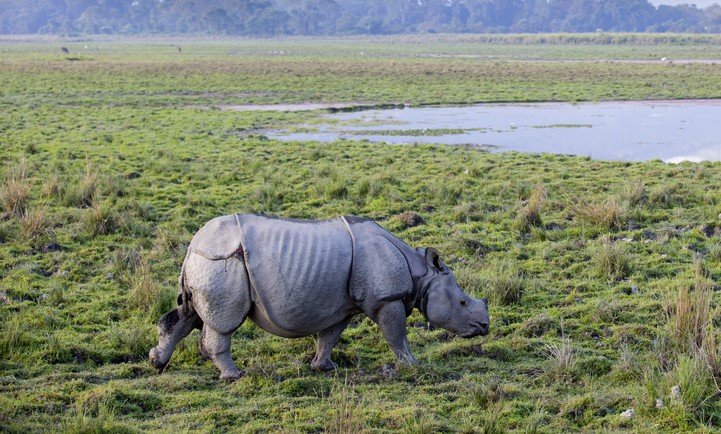Have you ever wondered Globally One-horned Rhinos Population? This species comes under the category of ”vulnerable to extinction” and there are currently 4000 individuals and increasing.
In the dense jungles of Asia, a magnificent creature roams—the one-horned rhino. Known for its prehistoric appearance and unique horn, this majestic species has captivated the hearts of wildlife enthusiasts worldwide. However, behind their awe-inspiring presence lies a story of struggle and survival.
Table of Contents
Status of the One-Horned Rhino Population

One Horned Rhino is also known as Indian Rhino. As we embark on our journey to understand the plight of one-horned rhinos, it’s essential to grasp their current population status. With a heavy heart, we acknowledge that their numbers have drastically declined over the years. However, dedicated conservation efforts have provided a glimmer of hope.
What Are The Characteristics of One Horned Rhinos?
The greater one-horned rhino has a single black horn that is 8 to 25 inches long and a gray-brown hide with folds in the skin that make it look like armor. The species lives alone, except when adult males or rhinos that are almost adults get together at wallows or to feed.
Males’ home areas aren’t very clear, they’re not well protected, and they often overlap. For the most part, they graze, which means they eat grasses, leaves, branches of shrubs and trees, fruit, and water plants.

Description of their Natural Habitat Of One Horned Rhinos
One Horned Rhinos or Indian rhinos used to live all the way up to the border with Myanmar in the north, along the valleys of the Indus, Ganges, and Brahmaputra rivers, from Pakistan to the border with Myanmar, through Bangladesh and the southern parts of Nepal and Bhutan.
Myanmar, southern China, and Indochina may have also seen them. They live in the alluvial grasslands of the Brahmaputra region and the Terai. Its range has slowly shrunk due to habitat loss and changes in climate. By the 19th century, it was only living in the Terai forests in southern Nepal, northern Uttar Pradesh, northern Bihar, northern West Bengal, and the Brahmaputra Valley in Assam.
These days, it only lives in a few places in southern Nepal, northern West Bengal, and the Brahmaputra Valley. People have changed the landscapes around its habitat, so it can be found in many places in pastures, secondary woods, and cultivated areas. There were a lot of Indian rhinos in the narrow plains of the Manas River and Royal Manas National Park in Bhutan in the 1980s.
Why they matter?

They live with other animals and plants that are also important. These other species are also safer when we protect greater one-horned rhinos. People in the countries where these rhinos live are also very proud of them, which makes them more likely to take care of the environment. The money that these communities get from rhino ecotourism is also good for them.
What Are The Conservation Efforts For One Horned Rhino?
One of the biggest conservation successes in Asia has been the return of the greater one-horned rhino. The greater one-horned rhino was saved from extinction by strict management and security from wildlife officials in India and Nepal.
There are now about 4000 rhinos living in northeastern India and the Terai forests of Nepal. The survival of the one-horned rhino relies heavily on the dedication of conservation organizations and passionate individuals.
Globally One-horned Rhinos Population? Threats to One Horned Rhinos

Unfortunately, the one-horned rhino faces numerous threats that jeopardize its survival.
The illegal wildlife trade, fueled by the demand for rhino horns, poses a grave risk to their existence.
Additionally, habitat loss and fragmentation, caused by human encroachment and agricultural expansion, further exacerbate the challenges these rhinos face.
Understanding these threats is crucial in formulating effective conservation strategies.
Final Thoughts
The journey of the one-horned rhino is one of resilience and determination. They are a testament to the power of conservation and the indomitable spirit of nature. As we conclude our exploration, let us remember that the fate of these magnificent creatures lies in our hands.
Also Read: How many Javan Rhinos are left in the world?





